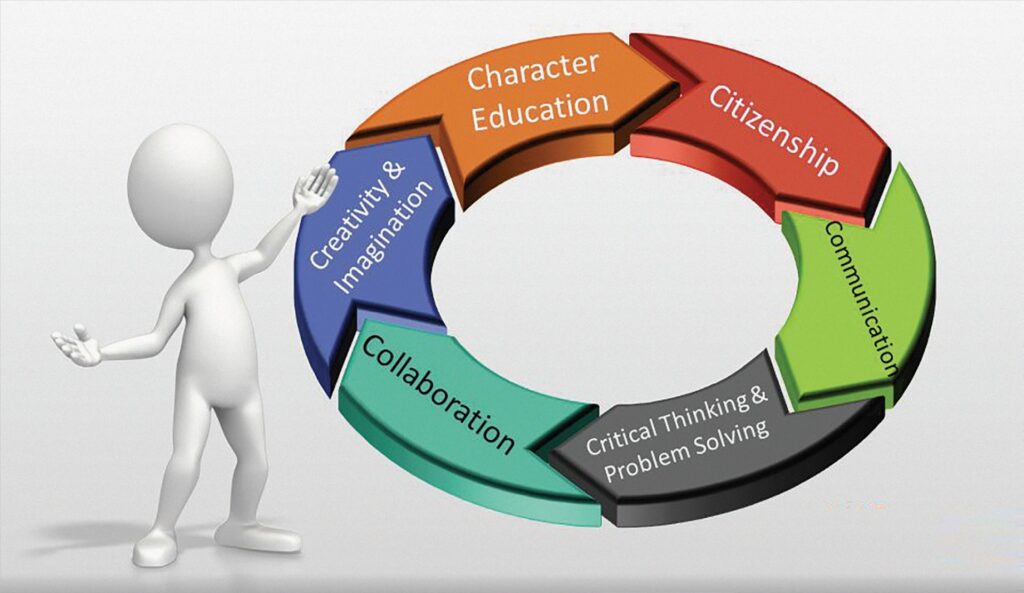5 Moves for Nepal’s Moment

The night the crowds thinned on Nepal’s streets during the third week of September, the air felt different: quiet yet charged. A generation had articulated, with unusual clarity, that ritual without results is no longer acceptable. By the next morning, cabinet seats had changed hands and statements dominated the news cycle. But the truer question – the management question – was already moving from the street to our offices: if a nation can demand renewal, why can’t our organisations? In change language, the country had unfrozen; the question for business leaders is whether we will now redesign the way value, truth, and merit flow, or merely rewrite memos.
Change wins when everyday work makes the future the path of least resistance.
In that spirit, here is a reflective playbook; five change-management moves that connect Nepal’s civic awakening to the work of running companies with young talent, fast technology, and unforgiving markets.
Stability and experimentation are not enemies; they are a managed tension.
First, run today and build tomorrow; on purpose.
During the protests, one lesson was unmistakable: we can hold two truths at once; respect for stability and hunger for change. Companies need the same balance. Most Nepali firms still ask a single structure to both protect today’s business and invent tomorrow’s; inevitably, one goal starves the other. The practical fix is what management scholars call organisational ambidexterity: let the core be measured on reliability and margin, while a separate, protected lane experiments with new offers on a different cadence and with different metrics; connected only at the top so learning flows both ways (Tushman, 1996; Beer & Nohria, 2000).
Small wins aren’t cosmetic; they’re compounding interest on belief.
Think of a telecom that keeps its network team focused on uptime and cost-to-serve, while a compact growth cell experiments weekly with youth bundles, WhatsApp onboarding, and micro-referral loops measured on activation speed and 90-day retention; not short-term ARPU (Average Revenue Per User). The country’s transition reminds us: stability and experimentation are not enemies; they are a managed tension.
Second, renegotiate the compact with the young workforce.
On the streets and aftermath of the same, the loudest message was not disrespect; it was a claim to adulthood – ‘treat us as responsible partners’. Inside firms, the parallel is the personal compact: the implicit deal about growth, transparency, and dignity (Strebel, 1996). When juniors experience opaque promotions, slow feedback, or performative townhalls, resistance is rational, not rebellious. Leaders should publish a one-page ‘what improves for you this year’: faster feedback cycles, clear promotion criteria, quarterly mobility windows, and an open channel where early-career employees can pitch process fixes with tiny execution budgets. Then tie manager incentives to behaviours that prove the new deal; coaching quality, time-to-decision on floor-raised issues, and internal mobility. The protests created urgency; only a credible compact converts it to commitment.
Third, fix the work, not the wallpaper.
National reform will ring hollow if ministries don’t change how decisions move and who is accountable. The same is true for companies. Programmes fail when goals, workflows, and accountability stay intact beneath new slogans (Beer, Eisenstat, & Spector, 1990). Start by shortening the distance between problem and permission. Push routine choices one level closer to customers with simple guardrails and after-the-fact sampling rather than pre-approval queues. Keep a one-page scorecard that blends lead indicators; cycle time, first-contact resolution, percent of decisions at the lowest level, with outcomes like on-time delivery, NPS (Net Promoter Score), and margin. Communication should follow the human route, not the corporate one; short, plain, repeated conversations from immediate supervisors that answer ‘what changes for me this quarter?’ (Larkin & Larkin, 1996). If the nation now demands performance over pageantry, our firms should too.
A concrete illustration helps. Consider a home-appliance manufacturer overwhelmed by warranty delays. Instead of routing every case to head office, the company authorises call-centre agents and local service hubs to resolve standard claims at first contact using a simple decision tree: book a technician, approve a parts swap up to a cap, or offer a like-for-like replacement for clearly defective units. Head office samples a weekly set for compliance and trend analysis rather than pre-clearing each decision. Targets are plain: first-contact resolution above 60% and doorstep fix or replacement within 48 hours in major cities. The effect is the same one the country seeks; faster, fairer decisions, achieved through redesigned work, not louder announcements.
Fourth, operate a small-wins engine.
Public life has taught us that momentum wanes in the messy middle; the same dip shows up in companies. The way through is to make progress visible and near-term. Run rolling 90-day campaigns on one end-to-end journey; dealer onboarding, SME credit, technician dispatch etc.; remove five bottlenecks of the process, and show the before/after: forms eliminated, handoffs cut, days saved. An FMCG distributor, for instance, can aim for ‘order to delivery in 48 hours for Tier-1 outlets,’ standardise cut-off times, pre-approve clean credit, and post daily cycle times in the sales office. When the managing director reviews outliers every Friday, the message changes from ‘try harder’ to ‘let’s fix the pipe.’ In civic transitions, citizens judge by lived improvements in public services; in companies, employees and customers do the same. Small wins are not cosmetic; they are compounding interest on belief.
Fifth, make innovation routine: capture, recombine, reuse.
The streets did not produce brand-new concepts; they recombined familiar truths; fairness, speed, voice; into a demand we could not ignore. Innovation works similarly. It is not a lightning bolt but a factory that brokers knowledge (Hargadon & Sutton, 2000). Capture fixes that work; service scripts, code components, pricing playbooks, layout templates in one searchable place. Recombine them in new contexts: what accelerates KYC can shorten vendor onboarding; what trims changeover in one plant can cut turnaround in another. Reward reuse explicitly so teams that scale a proven practice are celebrated, not only those who invent something ‘new’. Anchor that factory in a vivid, near-term destination people can picture: ‘48-hour permit’, ‘five-day SME loan’, ‘same-day dispute closure’. Purpose plus a concrete challenge beats slogans every time.
Underneath all five moves is a leadership stance that fits the times. The protests raised the temperature; leaders must now hold it at a level where learning happens without boiling the pot. That means sensemaking over certainty theatre, style agility over one-speed management, and calendars that reflect the priorities we claim. It also means modesty: Level 5-leader like behaviour; a blend of humility and fierce resolve, often looks quiet in the moment and obvious in hindsight, because it lives in revised metrics, simplified approvals, and protected pilots rather than in dramatic quotes (Collins, 2001). In both cabinet rooms and C-suites, character shows up not in speeches but in who you meet, what you review, and what you stop doing.
People accept tough calls when they’re heard, the logic is clear, and promises are kept.
If there is one final parallel between country and company, it is this: legitimacy now comes from fair process and visible outcomes. People will accept tough calls when they were heard, the logic was explained, and the promises were kept, and when the queue shortens, the permit arrives, the refund hits, the service technician shows up. Nepal’s Gen Z has already supplied the hardest part: undeniable urgency and a public mandate for accountability. The rest is craftsmanship; turning a moment into a management system. When decision rights, scorecards, budgets, and stories point in the same direction, organisations begin to prefer the new logic on their own. That is when change stops being a campaign and becomes how you run the place.
References
– Abrahamson, E. (2000). Change without pain. Harvard Business Review, 78(4), 75–79.
– Beer, M., Eisenstat, R. A., & Spector, B. (1990). Why change programs don’t produce change. Harvard Business Review, 68(6), 158–166.
– Beer, M., & Nohria, N. (2000). Cracking the code of change. Harvard Business Review, 78(3), 133–141.
– Collins, J. (2001). Good to great: Why some companies make the leap… and others don’t. HarperBusiness.
– Collins, J. C., & Porras, J. I. (1996). Building your company’s vision. Harvard Business Review, 74(5), 65–77.
– Hargadon, A., & Sutton, R. I. (2000). Building an innovation factory. Harvard Business Review, 78(3), 157–166.
– Kotter, J. P. (1995). Leading change: Why transformation efforts fail. Harvard Business Review, 73(2), 59–67.
– Larkin, T. J., & Larkin, S. (1996). Reaching and changing frontline employees. Harvard Business Review, 74(3), 95–104.
– Strebel, P. (1996). Why do employees resist change? Harvard Business Review, 74(3), 86–92.
– Tushman, M. (1996). In M. Tushman (Ed.), Managing strategic innovation and change: A collection of readings. Oxford University Press.
Khatri is Management Consultant and Educator


